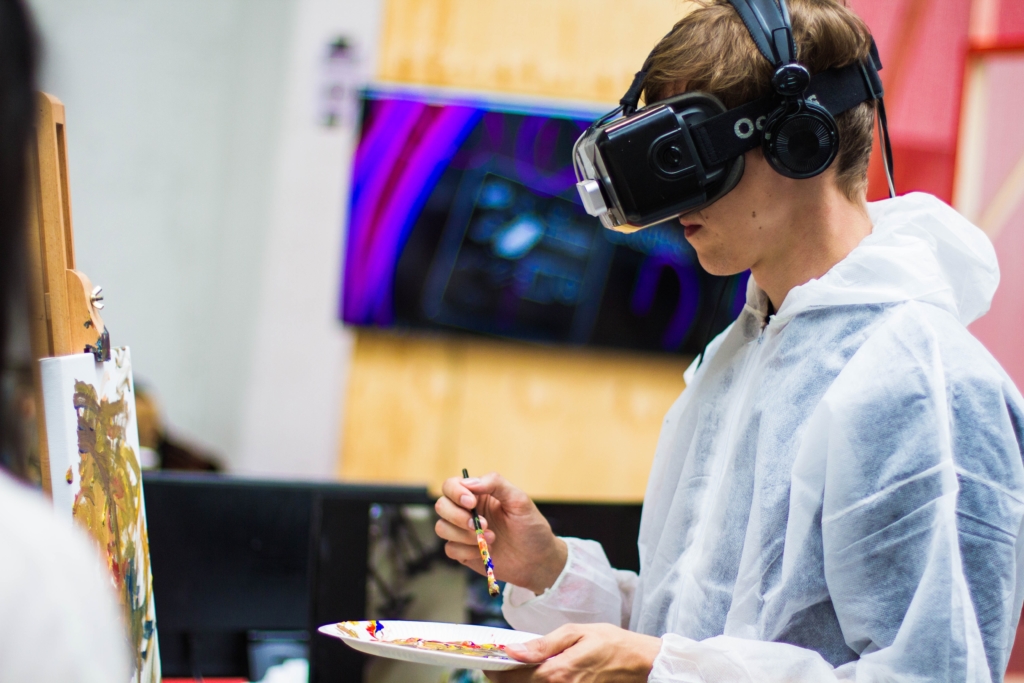Science. Technology. Engineering. Math. The STEM field is consistently at the forefront of global innovation, and on November 8, we commemorate it with National STEM Day.
What is STEM?
STEM education represents more than the subjects in the acronym. It encourages an interdisciplinary approach based on real-world application of technical subjects. STEM education has been encouraged at all levels in the U.S., from kindergarten to higher education.
What about STEAM?
The inherent forward-moving propensity of STEM fields guarantees innovation and change. In fact, a new movement is working to include art and design into the concept of STEM. The new idea, STEAM, highlights the necessity of incorporating art when turning scientific and technical projects into usable, real-world products. The inclusion of art also introduces a creative side to a field typically associated with computers, coding, and calculators. This video of Paraguayan students using musical instruments made from discarded material embodies the concept of STEAM – where science, technology, engineering, and math synergize with art.
STEAM activists have experienced some opposition.
- STEM traditionalists argue that STEM naturally incorporates art in its design processes. If STEM had been deliberately excluding the arts, then a modified acronym might be necessary. This group says that STEM should keep its focus on fostering rigorous math and science abilities, and that distraction from other subjects would threaten the mission of STEM.
- Artists argue that engineering and technology are indeed enhanced by art; however in today’s technologically-focused world, we face challenges upholding the value of art. This group says that art should be studied and appreciated for its own value, and studying it in relation to engineering may weaken the true importance and purpose of artwork.
What matters more than the inclusion or exclusion of the letter ‘A’ is how the STEM/STEAM field is developing around the globe. The United States has historically been a leader in science and technology, but the modern scientific landscape is changing.
Who are today’s leaders in STEM/STEAM?
Globally, China, India, and the U.S. produce the largest number of STEM/STEAM graduates. China rapidly outpaces the U.S., earning 4.7 million STEM/STEAM degrees in 2016, while U.S. Americans earned 568,000.
China, India, and the U.S. STEM/STEAM rankings benefit from their countries’ massive populations. Per Capita STEM/STEAM degree earnings tell a different story. According to the latest Science, Technology, and Industry Scoreboard Report from the Organization of Economic Cooperation and Development (OECD), the countries with the largest percentage of STEM graduates per capita in 2015 were as follows:
- South Korea: 32%
- Germany: 31%
- Sweden: 28%
- Finland: 28%
- France: 27%
Per capita rankings paint a more accurate picture of today’s major STEM/STEAM sources. Both international and interdisciplinary collaborations will propel future innovation in science, technology, engineering, and math. Artists certainly have their place in innovation as well. As 19th century photographer Charles Nègre said, “where science ends, art begins.”
Sharon Schweitzer and Emilie Lostracco co-wrote this post. Sharon Schweitzer, J.D., is a cross-cultural trainer, modern manners expert, and the founder of Access to Culture. In addition to her accreditation in intercultural management from the HOFSTEDE centre, she serves as a Chinese Ceremonial Dining Etiquette Specialist in the documentary seriesConfucius was a Foodie, on Nat Geo People. She is the resident etiquette expert on two popular lifestyle shows: ABC Tampa Bay’s Morning Blend and CBS Austin’s We Are Austin. She is regularly quoted by BBC Capital, Investor’s Business Daily, Fortune, and the National Business Journals. Her Amazon #1 Best Selling book in International Business, Access to Asia: Your Multicultural Business Guide, now in its third printing, was named to Kirkus Reviews’ Best Books of 2015. She’s a winner of the British Airways International Trade Award at the 2016 Greater Austin Business Awards.
Emilie Lostracco is a Fall 2017 Cross-Cultural Communication Intern with Access to Culture. The Montreal native is currently a senior at the University of Texas at Austin, studying International Relations and Global Studies. Emilie specializes in international environmental efforts, European studies, and French. She plans on graduating with honors in December. Connect with her via Linkedin.
Photo credit; Billetto Editorial on Unsplash


Leave A Comment